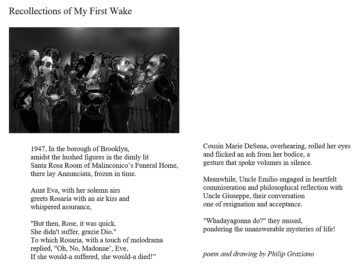
Wednesday Poem


Leila Sloman in Quanta Magazine:
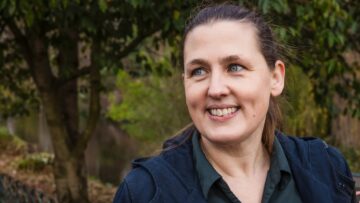 Sarah Hart has always had an eye for the covert ways mathematics permeates other fields. As a child, she was struck by the ubiquity of the number 3 in her fairy tales. Hart’s mother, a math teacher, encouraged her pattern-seeking, giving her math puzzles to pass the time. Hart went on to earn a doctorate in group theory in 2000 and later became a professor at Birkbeck, University of London. Hart’s research probed the structure of Coxeter groups, more general versions of structures that catalog the symmetries of polygons and prisms. In 2023, she published Once Upon a Prime, a book about the ways math appears in fiction and poetry. “Since we humans are part of the universe, it is only natural that our forms of creative expression, literature among them, will also manifest an inclination for pattern and structure,” Hart wrote. “Mathematics, then, is the key to an entirely different perspective on literature.”
Sarah Hart has always had an eye for the covert ways mathematics permeates other fields. As a child, she was struck by the ubiquity of the number 3 in her fairy tales. Hart’s mother, a math teacher, encouraged her pattern-seeking, giving her math puzzles to pass the time. Hart went on to earn a doctorate in group theory in 2000 and later became a professor at Birkbeck, University of London. Hart’s research probed the structure of Coxeter groups, more general versions of structures that catalog the symmetries of polygons and prisms. In 2023, she published Once Upon a Prime, a book about the ways math appears in fiction and poetry. “Since we humans are part of the universe, it is only natural that our forms of creative expression, literature among them, will also manifest an inclination for pattern and structure,” Hart wrote. “Mathematics, then, is the key to an entirely different perspective on literature.”
Since 2020, Hart has been the professor of geometry at Gresham College in London. Gresham has no traditional courses; instead, its professors each deliver several public lectures per year. Hart is the first woman to ever hold the 428-year-old position, which was occupied in the 17th century by Isaac Barrow, famous for teaching another Isaac (Newton). More recently, it was held by Roger Penrose, a mathematician who won the 2020 Nobel Prize in Physics. Hart spoke with Quanta about how mathematics and art influence one another. The interview has been condensed and edited for clarity.
More here.
Charles Schmidt in Undark:
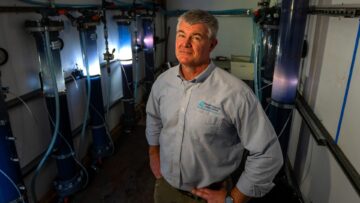 SITUATED IN A former sand and gravel pit just a few hundred feet from the Kennebec River in central Maine, the Riverside Station pumps half a million gallons of fresh groundwater every day. The well station processes water from two of five wells on either side of the river operated by the Greater Augusta Utility District, or GAUD, which supplies drinking water to nearly 6,000 local households. Most of them reside in Maine’s state capital, Augusta, just a few miles to the south. Ordinarily, GAUD prides itself on the quality of its water supply. “You could drink it out of the ground and be perfectly safe,” said Brian Tarbuck, GAUD’s general manager.
SITUATED IN A former sand and gravel pit just a few hundred feet from the Kennebec River in central Maine, the Riverside Station pumps half a million gallons of fresh groundwater every day. The well station processes water from two of five wells on either side of the river operated by the Greater Augusta Utility District, or GAUD, which supplies drinking water to nearly 6,000 local households. Most of them reside in Maine’s state capital, Augusta, just a few miles to the south. Ordinarily, GAUD prides itself on the quality of its water supply. “You could drink it out of the ground and be perfectly safe,” said Brian Tarbuck, GAUD’s general manager.
But in March 2021, environmental sampling of Riverside well water revealed trace levels of per- and polyfluoroalkyl substances (PFAS), or “forever chemicals,” as they’re better known. The levels at Riverside didn’t exceed Maine’s drinking water standard of 20 parts per trillion (ppt), which was a relief, Tarbuck said. Still, he and his colleagues at the utility were wary. PFAS have been linked to a variety of health problems, and Maine lawmakers at the time were debating an even stricter limit for the chemicals. Tarbuck knew a lower standard was coming someday. The only question was when.
As it turns out, a tougher standard is expected early this year. That’s when the U.S. Environmental Protection Agency is set to finalize an enforceable cap on PFAS in drinking water that will require GAUD and thousands of other utilities around the country to update their treatment methods. The standard, which in regulatory terms is called a maximum contaminant level or MCL, limits permissible amounts of the two most studied and ubiquitous PFAS compounds — PFOA and PFOS — to just 4 ppt in drinking water each.
More here.
Tobias Fischer at White Fungus:
 Based in Thailand, the twelve members of the TEO ensemble give concerts almost every single day. Their music, performed on instruments including oversized drums, harmonicas, chimes, and the ranat (a Southeast Asian version of the xylophone), contains both composed and improvised sections and sounds, like a blend of local folk melodies and the music played in Buddhist temples.
Based in Thailand, the twelve members of the TEO ensemble give concerts almost every single day. Their music, performed on instruments including oversized drums, harmonicas, chimes, and the ranat (a Southeast Asian version of the xylophone), contains both composed and improvised sections and sounds, like a blend of local folk melodies and the music played in Buddhist temples.
All members have received a first-class education from Dave Soldier, a conceptual artist and guitarist who briefly performed in Bo Diddley’s band, collaborated with author Kurt Vonnegut, composed string arrangements for David Byrne, and worked with Pete Seeger (he is also a neuroscientist and professor working under his given name David Sulzer at Columbia University).
The TEO has recorded three albums so far and has been visited by journalists from renowned publications such as The Economist and The New York Times.
more here.
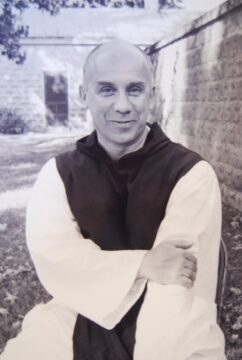 Thomas Merton was perhaps the most important Christian mystic of the twentieth century. For the past twenty-six years, he had lived as a Trappist monk at the Abbey of Gethsemani in Kentucky, and for the past three he had lived in a cinder-block hermitage in the woods. I am accused of living in the woods like Thoreau instead of in the desert like St. John the Baptist, he wrote to a friend. Whatever else can be said about Merton, and much has been said, one thing is certain: he was a monk who loved trees. One might say I had decided to marry the silence of the forest, he wrote. The sweet dark warmth of the whole world will have to be my wife. Out of the heart of that dark warmth comes the secret that is heard only in silence … Perhaps I have an obligation to preserve the stillness, the silence, the poverty, the virginal point of pure nothingness which is at the center of all other loves.
Thomas Merton was perhaps the most important Christian mystic of the twentieth century. For the past twenty-six years, he had lived as a Trappist monk at the Abbey of Gethsemani in Kentucky, and for the past three he had lived in a cinder-block hermitage in the woods. I am accused of living in the woods like Thoreau instead of in the desert like St. John the Baptist, he wrote to a friend. Whatever else can be said about Merton, and much has been said, one thing is certain: he was a monk who loved trees. One might say I had decided to marry the silence of the forest, he wrote. The sweet dark warmth of the whole world will have to be my wife. Out of the heart of that dark warmth comes the secret that is heard only in silence … Perhaps I have an obligation to preserve the stillness, the silence, the poverty, the virginal point of pure nothingness which is at the center of all other loves.
He had been searching for that center his whole life.
Le point vierge, he called it.
Indrajit Hazra in The Print:
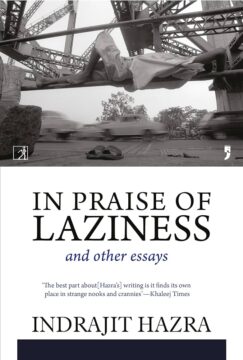 In a 1972 interview conducted by Amitabh Basu in his column ‘Dainandin Jibone’ (In Everyday Life) where in every issue of the film magazine, Ultoroth, Basu posed a set list of questions to writers, Shibram had articulated the nous of laziness. Replying to the very first question, ‘When do you get up in the morning?’ he sets the warp, woof and tone:
In a 1972 interview conducted by Amitabh Basu in his column ‘Dainandin Jibone’ (In Everyday Life) where in every issue of the film magazine, Ultoroth, Basu posed a set list of questions to writers, Shibram had articulated the nous of laziness. Replying to the very first question, ‘When do you get up in the morning?’ he sets the warp, woof and tone:
It depends on the time. I try to get up as soon as I wake up. But after sleeping all night I feel so tired that to clear that very tiredness I need to sleep a bit more. As I keep doing this, when it becomes impossible not to get up, when it looks bad, then I just have to get up from bed.
This is languor as joie de vivre, the purest manifestation of freedom, life as unmovedness—until internal compulsion compels.
More here.
Leon Vlieger in The Inquisitive Biologist:
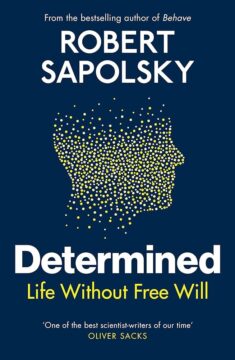 Robert M. Sapolsky is a professor of biology and neurology who you may remember from his 2017 best-seller Behave, a 790-page behemoth on the biology of human behaviour. Before delving in, let me immediately highlight that Determined is accessible, well-researched, witty, and irreverent; it regularly made me chuckle. For a book that could have gotten bogged down in philosophical and neurobiological jargon, this one is a joy to read.
Robert M. Sapolsky is a professor of biology and neurology who you may remember from his 2017 best-seller Behave, a 790-page behemoth on the biology of human behaviour. Before delving in, let me immediately highlight that Determined is accessible, well-researched, witty, and irreverent; it regularly made me chuckle. For a book that could have gotten bogged down in philosophical and neurobiological jargon, this one is a joy to read.
Clearly, Sapolsky does not believe in free will. But what does that mean? He falls in the minority camp of hard incompatibilism: the world is deterministic (i.e. events result from both prior events and the laws of nature), this is incompatible with free will, and we are thus not morally responsible for our actions.
More here.
Charmaine Chua in the Boston Review:
 Beginning in the late 1860s, the decade that it took to construct the Suez Canal, photographs depicting its feats of engineering circulated across the world. Sold to travelers as souvenirs, featured in Le Monde, and later exhibited at the 1889 Paris world fair, they enshrined on paper the industrial monumentality of the dredgers that excavated earth into sea.
Beginning in the late 1860s, the decade that it took to construct the Suez Canal, photographs depicting its feats of engineering circulated across the world. Sold to travelers as souvenirs, featured in Le Monde, and later exhibited at the 1889 Paris world fair, they enshrined on paper the industrial monumentality of the dredgers that excavated earth into sea.
As publicized images of the machinic wonders of modernity, they also served as promissory notes, enticing investors to purchase shares in the joint-stock Suez Canal Company. The photographs telegraphed seductive promises of financial gain, pictorializing the genius of European engineering that could dig a manmade channel across the African continent. Running through the pictures, historian Mohamed Gamal-Eldin discovered, was a striking pattern. For the technological sublime to work its wonder on the awed spectator, the photos had to be evacuated of the laboring subjects who made the feat possible: the many tens of thousands of dispossessed fellahin—peasants—who dug the monumental canal by hand.
More here.
If the law didn’t apply to me
I would squat in an upper income
suburb in SoCal the same way
Europeans squatted on land not their own.
And after stealing a home
not my own I would bulldoze the entire block to the ground.
Put up a 10-story apartment complex.
Siphon water and electricity
from the entire neighborhood
watching pools go empty,
and gardens wilt.
I would leave them with no choice,
but to move out or rent from me
at a cost equal to half or more
than the average family’s monthly income
while never fixing sewage, or power.
I would,
call the cops on all of them,
for walking their dogs at 11 PM,
for jogging in the middle of the street,
and for wearing yoga pants at 2 pm on a Wednesday afternoon.
Happily,
to boost the local economy,
I would open a pawn shop,
Paycheck loan management center
and liquor store.
While I’m at it,
I could get a 1980’s CIA connection,
traffic drugs on the block,
hand some nickels and dimes
and a glock.
Give them different colored bandanas.
Sit back and watch them tear each other apart.
Use the profit to fund an illegal war in some foreign country
and then call the cops on which ever group gets too big.
But I would never do this,
because it’s already been done to us.
by Ramon Jimenez
from Decomp Journal
Rand Richards Cooper at Commonweal:
 Payne is America’s poet laureate of losers. Over thirty years, the writer-director has sheltered a menagerie of the bumbling, the henpecked, the ineffectual, the distressed, and the depressed. Payne lists both Italian neo-realism and American movies of the 1970s (he was born in 1961) as influences. But his films bear a stamp all his own. Their hallmark elements include a fondness for voiceovers; a reliance on music as an active arm of storytelling; a use of both professional actors and non-actors; a commitment to character-forward stories, adapted from novels, that emphasize place and character; and, above all, a balancing, or mingling, or juxtaposition, of disparate tones and intentions.
Payne is America’s poet laureate of losers. Over thirty years, the writer-director has sheltered a menagerie of the bumbling, the henpecked, the ineffectual, the distressed, and the depressed. Payne lists both Italian neo-realism and American movies of the 1970s (he was born in 1961) as influences. But his films bear a stamp all his own. Their hallmark elements include a fondness for voiceovers; a reliance on music as an active arm of storytelling; a use of both professional actors and non-actors; a commitment to character-forward stories, adapted from novels, that emphasize place and character; and, above all, a balancing, or mingling, or juxtaposition, of disparate tones and intentions.
Payne’s movies exude ambiguity. They are comedies, but their humor ranges from heartfelt to harrowing, sometimes in baffling succession. In a perceptive 2013 essay in the New York Review of Books, Geoffrey O’Brien noted “a condition of permanent uncertainty” in Payne, “a mood that can move fluidly, with the slightest of accentuations, between farce and poignancy.”
more here.
Oscar Schwartz at The Paris Review:
 In Cave’s weltanschauung, as laid out in the letter, the machine is a priori precluded from participating in the authentic creative act, because it is not, well, human. If this argument sounds hollow and slightly narcissistic, that’s because it is. It follows a circular logic: humans (and Nick Cave) are special because they alone make art, and art is special because it is alone made by humans (and Nick Cave). His argument is also totally familiar and banal—a platitude so endlessly repeated in contemporary discourse that it feels in some way hard-baked into the culture. According to historians of ideas (see Arthur Lovejoy, Isaiah Berlin, Alfred North Whitehead), this thesis took form sometime in the second half of the eighteenth century. A brief and noncomprehensive summary: to preserve human dignity in the face of industrialization, philosophers and poets, who were later called the Romantics, began to redraw ontological boundaries, placing humans, nature, and art on one side, and machines, industry, and rationalism on the other. Poets became paragons of the human, and their poems examples of that which could never be replicated by the machine. William Blake, for instance, one of Cave’s heroes, proposed that if it were not for the “Poetic or Prophetic character,” the universe would become but a “mill with complicated wheels.”
In Cave’s weltanschauung, as laid out in the letter, the machine is a priori precluded from participating in the authentic creative act, because it is not, well, human. If this argument sounds hollow and slightly narcissistic, that’s because it is. It follows a circular logic: humans (and Nick Cave) are special because they alone make art, and art is special because it is alone made by humans (and Nick Cave). His argument is also totally familiar and banal—a platitude so endlessly repeated in contemporary discourse that it feels in some way hard-baked into the culture. According to historians of ideas (see Arthur Lovejoy, Isaiah Berlin, Alfred North Whitehead), this thesis took form sometime in the second half of the eighteenth century. A brief and noncomprehensive summary: to preserve human dignity in the face of industrialization, philosophers and poets, who were later called the Romantics, began to redraw ontological boundaries, placing humans, nature, and art on one side, and machines, industry, and rationalism on the other. Poets became paragons of the human, and their poems examples of that which could never be replicated by the machine. William Blake, for instance, one of Cave’s heroes, proposed that if it were not for the “Poetic or Prophetic character,” the universe would become but a “mill with complicated wheels.”
more here.
Tim Adams in The Guardian:
 Vincent Deary is a clinical and academic specialist in fatigue, in the ways in which we might be mentally and physically spent by life. This book, part memoir of his working practice, part inquiry into the ways in which mental health is undone, is a sequel to an earlier volume, How We Are, published in 2015. The chronology is pertinent. The trajectory of those intervening nine years of austerity, and pandemic, and precarity, serve to make this volume both inevitable and urgent. Sleeplessness and anxiety have been among the few growth sectors in that decade. If Deary’s previous book was, just about, a meditation on how we might thrive in the world, this one is a subtle catalogue of the ways in which we fail to do so. One of his colleagues has a phrase for our prevailing psychological moment: “It’s like we are always one step ahead of the hounds.”
Vincent Deary is a clinical and academic specialist in fatigue, in the ways in which we might be mentally and physically spent by life. This book, part memoir of his working practice, part inquiry into the ways in which mental health is undone, is a sequel to an earlier volume, How We Are, published in 2015. The chronology is pertinent. The trajectory of those intervening nine years of austerity, and pandemic, and precarity, serve to make this volume both inevitable and urgent. Sleeplessness and anxiety have been among the few growth sectors in that decade. If Deary’s previous book was, just about, a meditation on how we might thrive in the world, this one is a subtle catalogue of the ways in which we fail to do so. One of his colleagues has a phrase for our prevailing psychological moment: “It’s like we are always one step ahead of the hounds.”
There is a rawness to Deary’s analysis that gives a compelling human edge to his theorising. Some of that comes from his allusions to a breakdown he himself suffered in recent years. Otherwise, he dwells on case studies of people he has met in his work, individuals whose “allostatic load” of stresses – the camel’s-back-of-straws waiting for one too many – become overwhelming.
More here.
Mariana Lenharo in Nature:
 An artificial intelligence (AI) system trained to conduct medical interviews matched, or even surpassed, human doctors’ performance at conversing with simulated patients and listing possible diagnoses on the basis of the patients’ medical history1. The chatbot, which is based on a large language model (LLM) developed by Google, was more accurate than board-certified primary-care physicians in diagnosing respiratory and cardiovascular conditions, among others. Compared with human doctors, it managed to acquire a similar amount of information during medical interviews and ranked higher on empathy.
An artificial intelligence (AI) system trained to conduct medical interviews matched, or even surpassed, human doctors’ performance at conversing with simulated patients and listing possible diagnoses on the basis of the patients’ medical history1. The chatbot, which is based on a large language model (LLM) developed by Google, was more accurate than board-certified primary-care physicians in diagnosing respiratory and cardiovascular conditions, among others. Compared with human doctors, it managed to acquire a similar amount of information during medical interviews and ranked higher on empathy.
“To our knowledge, this is the first time that a conversational AI system has ever been designed optimally for diagnostic dialogue and taking the clinical history,” says Alan Karthikesalingam, a clinical research scientist at Google Health in London and a co-author of the study1, which was published on 11 January in the arXiv preprint repository. It has not yet been peer reviewed. Dubbed Articulate Medical Intelligence Explorer (AMIE), the chatbot is still purely experimental. It hasn’t been tested on people with real health problems — only on actors trained to portray people with medical conditions. “We want the results to be interpreted with caution and humility,” says Karthikesalingam.
Even though the chatbot is far from use in clinical care, the authors argue that it could eventually play a part in democratizing health care. The tool could be helpful, but it shouldn’t replace interactions with physicians, says Adam Rodman, an internal medicine physician at Harvard Medical School in Boston, Massachusetts. “Medicine is just so much more than collecting information — it’s all about human relationships,” he says.
More here.
Adam Fleming Petty in The Bulwark:
 A colophon is the design or symbol publishers place on the spines of their books. Glance at your bookshelves, at the bottom edge of each volume, and you might see the Knopf borzoi, the three fish of FSG, the interlocking geometric shapes of Graywolf. They are designed to be clean and distinctive but unobtrusive. The colophon is not what sells the book, after all. The author does. One doesn’t buy A Dance with Dragons because it’s published by Bantam. One buys it because it’s written by George R.R. Martin.
A colophon is the design or symbol publishers place on the spines of their books. Glance at your bookshelves, at the bottom edge of each volume, and you might see the Knopf borzoi, the three fish of FSG, the interlocking geometric shapes of Graywolf. They are designed to be clean and distinctive but unobtrusive. The colophon is not what sells the book, after all. The author does. One doesn’t buy A Dance with Dragons because it’s published by Bantam. One buys it because it’s written by George R.R. Martin.
Yet Dan Sinykin, a scholar and critic, has made the colophon and the commercial realities it represents his primary field of inquiry. His new book, Big Fiction: How Conglomeration Changed the Publishing Industry and American Literature, tracks the progress of U.S. fiction from the postwar era to the present from the perspective of the colophon. Harcourt, Brace; Pantheon; New American Library: these and countless other publishers provide the institutional setting of Sinykin’s account.
More here.
David Introcaso in The Hill:
 The social cost of greenhouse gas (GHG) emissions, considered the single most important measure in addressing the climate crisis, is generally defined as an estimate of societal damages, including health harms, resulting from unpaid or externalized GHG emissions. Researchers have been calculating this cost for several decades. Federal agencies began regularly incorporating the social cost of these emissions in 2008 — today, more than 80 federal regulations reflect its use.
The social cost of greenhouse gas (GHG) emissions, considered the single most important measure in addressing the climate crisis, is generally defined as an estimate of societal damages, including health harms, resulting from unpaid or externalized GHG emissions. Researchers have been calculating this cost for several decades. Federal agencies began regularly incorporating the social cost of these emissions in 2008 — today, more than 80 federal regulations reflect its use.
Despite the fact that GHG emissions are defined as the greatest threat to human health this century, the social cost of the health care industry’s emissions has somehow escaped the interest of the Department of Health and Human Services (HHS).
This is difficult to comprehend, since the health care industry emits an enormous amount of GHG pollution.
More here.
Scott Ostler in the San Francisco Chronicle:
 Hutchison wore the trash company’s jumpsuit, cap and reflective vest, and he sported a few days of beard stubble. He was collecting trash hoping to find something valuable: the DNA of a person who might prove to be a suspect in the sexual assault and murder of an 18-year-old security guard in Sunnyvale in 1969.
Hutchison wore the trash company’s jumpsuit, cap and reflective vest, and he sported a few days of beard stubble. He was collecting trash hoping to find something valuable: the DNA of a person who might prove to be a suspect in the sexual assault and murder of an 18-year-old security guard in Sunnyvale in 1969.
It was a cold case, and this was an expensive long shot. But his bosses in Sunnyvale and at the Santa Clara County District Attorney’s Office have learned that when Hutchison has a plan, you listen. In the seven years since he moved into robbery-homicide, the 38-year-old detective has solved eight cold cases — six homicides and two sexual assaults.
In his spare time.
More here.
Ken Roth in The Guardian:
 Watching lawyers for South Africa and Israel debate whether Israel is committing genocide in Gaza was like observing two versions of reality that barely intersect.
Watching lawyers for South Africa and Israel debate whether Israel is committing genocide in Gaza was like observing two versions of reality that barely intersect.
Each set of counsel, appearing before the international court of justice at The Hague, largely avoided the most powerful evidence contradicting their case, and the absence of a factual hearing or any questioning left it unclear how the judges will resolve the dispute. Yet I would wager that South Africa’s case was strong enough that the court will impose some provisional measures on Israel in the hope of mitigating the enormous civilian harm caused by Israel’s approach to fighting Hamas.
More here.